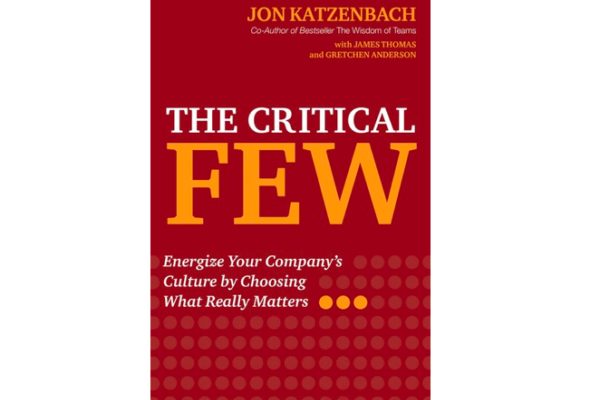
Since co-founding Katzenbach Partners in my mid-twenties (more on that journey in this post), I’ve been on a quest to understand how great professional services firms are built. Along this quest, I’ve had the opportunity to be an advisor and partner to a wide range of people building and running professional services firms in fields from design to investment banking to data science, at stages of evolution spanning thought leaders taking the leap to create a firm, to founders of boutiques beginning to scale, all the way to leaders of a few of the world’s largest and oldest firms. David Maister’s classic Managing the Professional Service Firm describes some of the essential features of professional services firms: organizations where the principal asset is the people, who apply their knowledge – whether in accounting, management consulting, design, or other domains – to solve problems for their clients. It will be a project for another season in life to write a book about what I’ve learned, in the tradition of Maister, but written for a world in which the knowledge economy, expert problem solving and talent markets have irrevocably changed.
In parallel, in work with corporations, I find myself constantly in partnership with the internal equivalent of professional services firms: strategy functions; innovation groups; organizational effectiveness teams; Chief Transformation Officers; special ops teams built to tackle challenges of the highest order, whether they relate to reshaping a company’s external environment, creating strategic partnerships with the company’s leading customers, or building a critical new capability on the inside. Most of the leaders of these teams are focused on delivering on high-stakes mandates and doing excellent work. A relative few are trying to build the equivalent of great firms, but on the inside. Very little has been written for these leaders, and as a down payment on much larger work, I’d like to share some thoughts here, building on recent dialogues with a couple dozen leaders in vastly different circumstances, who are each grappling with versions of the same questions.
There are many parallels between building great firms “on the outside” and “on the inside,” but two contrasts stand out as particularly important to understand and master.
The first core challenge of building a professional firm is demand generation. The core challenge of building a great firm on the inside is rationalizing and transforming demand.
While it isn’t easy to build credibility and demonstrate value as an internal team, once that threshold has been crossed, generating excess demand is often not difficult. However:
- Internal clients generally present needs and opportunities in ways that are too close in and too narrowly defined to be transformational
- Projects generally don’t come packaged with the level of sponsorship and the clarity of decision-making required to make truly bold moves
- While internal clients are generally receptive to disciplines of scoping and planning that clarify and formalize their initial ask, it is quite difficult to elevate a client’s thinking to ask much larger questions, make greater commitments and reexamine their own thinking in a more fundamental way
Building a great firm on the inside demands tackling these higher-order dilemmas. While there isn’t a recipe for this work, four patterns stand out for how a few exceptional teams position themselves for transformational work.
- These teams see projects as vehicles to achieve higher-level goals, versus as ends. They give equal attention to “what are we hiring this project to do” as “what are we being hired by an internal client to deliver.” They spend time as a team talking about what’s required to advance toward high-level goals, and how to build support for work that hasn’t yet been defined, versus spending collective time primarily on the machinery of delivering projects.
- These teams position themselves as strategic integrators, bringing together multiple functions in the enterprise (and often a range of external partners) to deliver work that doesn’t fit neatly into one particular domain of expertise. They build relationships at the top that enable them to take accountability for big goals, and develop collaborative lateral relationships that enable them to deliver complex programs.
- These teams stay small. Their small size forces them to choose rigorously among competing demands, and prevents them from getting locked into being the “default provider” of small projects in a particular domain of expertise, in a way that inevitably crowds out more transformational work. They work hard to develop credible solutions for internal clients who come to them with needs that they themselves can’t or shouldn’t meet, including referrals to trusted external partners.
- As work unfolds, these teams have difficult conversations up front about the conditions for success. They have the courage to ask for clear ownership of decision-making, commitment of resources, clearing of organizational obstacles, and so on at the outset of the work, holding up a mirror regarding what it will take for the work to be successful. They’d rather “lose” the opportunity up front, than get trapped with the accountability to deliver on an opportunity that will only have moderate impact.
While some of the most elite external professional firms follow these principles – e.g., Wachtell, Lipton stands out from most of the “white shoe” law firms in a similar fashion – the stakes are much higher for internal “firms,” as they cannot use the economic surplus from delivering high-priced work with middling consequences to fund the work that’s most impactful. Without this discipline of focus, internal teams will almost inevitably come to find that the good is the enemy of the great.
The second core challenge of building a professional services firm is retaining talent, developing associates into partners and sustaining a corps of partners over the long term. On the inside, the challenge is to build a team with exceptional vision and drive, while functioning as a developer and exporter of talent for the broader enterprise.
The talent model of professional services firms is built around an economic model. The core economic asset of the firm is a set of longstanding, high-value client relationships. The partners who own and drive these relationships realize an economic surplus. The career track for associates (for example, at a law firm) points toward this destination of partnership. Firms compete to keep partners, even as their rivals aim to build their business by poaching the rainmakers who hold these critical relationships.
Inside an enterprise, all these elements work differently. There is typically room inside an internal “firm” for only one “partner”-level executive, or perhaps a few. For most, achieving this level of professional success looks different: a tour of duty in the internal firm serves as a gateway to a role as an operating executive. Successful placements “in the business” create proof points for new talent about the value proposition of the internal firm, while also building high-trust network connections between the firm on the inside and the company’s critical operating units. The tension is that if this lure of internal placement becomes too strong, it can be difficult for the team to operate cohesively, and there can be too strong a temptation for members of the internal team to avoid challenging their clients in the ways required to do transformational work. Here too, the good can easily become the enemy of the great – and the internal team drifts into becoming an engine for delivering on projects, with talent who see their current roles as waystations, en route to higher positions in the business.
To avoid this drift, an internal “firm” must work hard to create a shared identity inside the team and a powerful engine for developing team members in ways that advance them to the next level of growth, which counterbalances the fact that the ultimate career destination for high-potentials will likely be outside the team. The same disciplines that help an internal team rationalize and transform demand help on the people side. Team members at all levels are learning:
- How to use projects as building blocks to advance higher-level goals, consequential to the whole enterprise
- How to act as the conductor of the orchestra, bringing together the “instruments” of different experts to drive complex, critical initiatives
- How to engage with leaders at the highest levels, setting up the structures and conditions to make big advances and overcome organizational barriers
The growth that comes from being in a crucible where these critical lessons can be learned is irreplaceable. With the right leadership, this shared, formative experience becomes a powerful bond among the members of an internal “firm,” which ties them together as a cohesive team.
These differences related to demand generation and talent models render building great firms on the inside a different game from building professional service firms on the outside. The two endeavors resemble each other as Go resembles chess, both games of strategic intricacy, each with its own rules and its own nuance.



